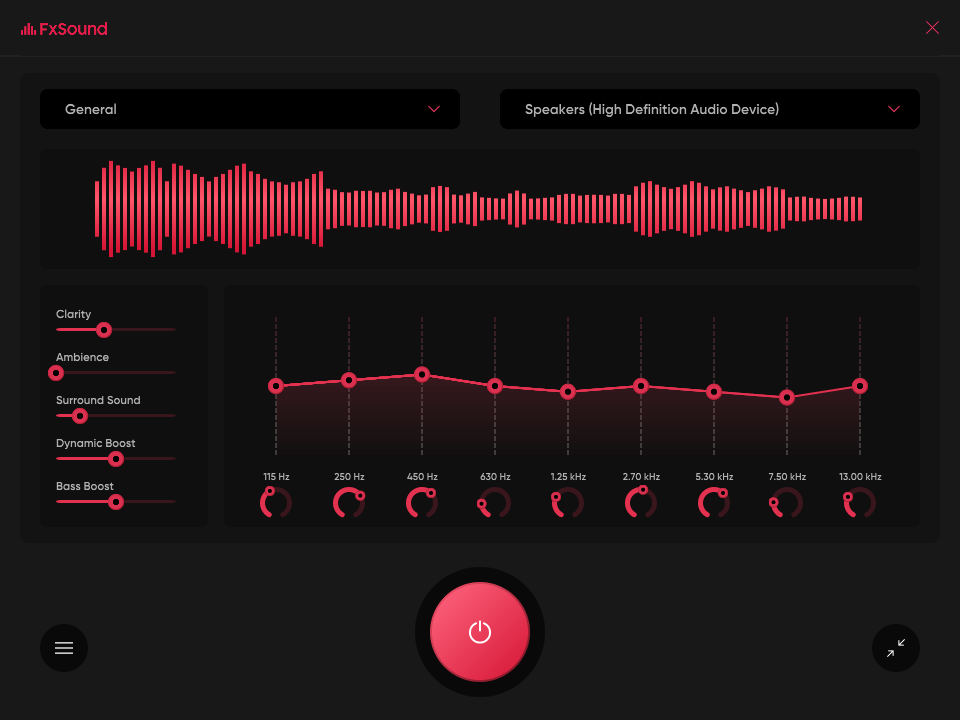New Claude 4 AI model refactored code for 7 hours straight
No sleep till Brooklyn
New Claude 4 AI model refactored code for 7 hours straight
Anthropic says Claude 4 beats Gemini on coding benchmarks; works autonomously for hours.
Benj Edwards
–
May 22, 2025 12:45 pm
|
4
The Claude 4 logo, created by Anthropic.
Credit:
Anthropic
The Claude 4 logo, created by Anthropic.
Credit:
Anthropic
Story text
Size
Small
Standard
Large
Width
*
Standard
Wide
Links
Standard
Orange
* Subscribers only
Learn more
On Thursday, Anthropic released Claude Opus 4 and Claude Sonnet 4, marking the company's return to larger model releases after primarily focusing on mid-range Sonnet variants since June of last year. The new models represent what the company calls its most capable coding models yet, with Opus 4 designed for complex, long-running tasks that can operate autonomously for hours.
Alex Albert, Anthropic's head of Claude Relations, told Ars Technica that the company chose to revive the Opus line because of growing demand for agentic AI applications. "Across all the companies out there that are building things, there's a really large wave of these agentic applications springing up, and a very high demand and premium being placed on intelligence," Albert said. "I think Opus is going to fit that groove perfectly."
Before we go further, a brief refresher on Claude's three AI model "size" namesis probably warranted. Haiku, Sonnet, and Opus offer a tradeoff between price, speed, and capability.
Haiku models are the smallest, least expensive to run, and least capable in terms of what you might call "context depth"and encoded knowledge. Owing to the small size in parameter count, Haiku models retain fewer concrete facts and thus tend to confabulate more frequentlythan larger models, but they are much faster at basic tasks than larger models. Sonnet is traditionally a mid-range model that hits a balance between cost and capability, and Opus models have always been the largest and slowest to run. However, Opus models process context more deeply and are hypothetically better suited for running deep logical tasks.
A screenshot of the Claude web interface with Opus 4 and Sonnet 4 options shown.
Credit:
Anthropic
There is no Claude 4 Haiku just yet, but the new Sonnet and Opus models can reportedly handle tasks that previous versions could not. In our interview with Albert, he described testing scenarios where Opus 4 worked coherently for up to 24 hours on tasks like playing Pokémon while coding refactoring tasks in Claude Code ran for seven hours without interruption. Earlier Claude models typically lasted only one to two hours before losing coherence, Albert said, meaning that the models could only produce useful self-referencing outputs for that long before beginning to output too many errors.
In particular, that marathon refactoring claim reportedly comes from Rakuten, a Japanese tech services conglomerate that "validatedcapabilities with a demanding open-source refactor running independently for 7 hours with sustained performance," Anthropic said in a news release.
Whether you'd want to leave an AI model unsupervised for that long is another question entirely because even the most capable AI models can introduce subtle bugs, go down unproductive rabbit holes, or make choices that seem logical to the model but miss important context that a human developer would catch. While many people now use Claude for easy-going vibe coding, as we covered in March, the human-powered"vibe debugging" that often results from long AI coding sessions is also a very real thing. More on that below.
To shore up some of those shortcomings, Anthropic built memory capabilities into both new Claude 4 models, allowing them to maintain external files for storing key information across long sessions. When developers provide access to local files, the models can create and update "memory files" to track progress and things they deem important over time. Albert compared this to how humans take notes during extended work sessions.
Extended thinking meets tool use
Both Claude 4 models introduce what Anthropic calls "extended thinking with tool use," a new beta feature allowing the models to alternate between simulated reasoning and using external tools like web search, similar to what OpenAI's o3 and 04-mini-high AI models currently do in ChatGPT. While Claude 3.7 Sonnet already had strong tool use capabilities, the new models can now interleave simulated reasoning and tool calling in a single response.
"So now we can actually think, call a tool process, the results, think some more, call another tool, and repeat until it gets to a final answer," Albert explained to Ars. The models self-determine when they have reached a useful conclusion, a capability picked up through training rather than governed by explicit human programming.
General Claude 4 benchmark results, provided by Anthropic.
Credit:
Anthropic
In practice, we've anecdotally found parallel tool use capability very useful in AI assistants like OpenAI o3, since they don't have to rely on what is trained in their neural network to provide accurate answers. Instead, these more agentic models can iteratively search the web, parse the results, analyze images, and spin up coding tasks for analysis in ways that can avoid falling into a confabulation trap by relying solely on pure LLM outputs.
“The world’s best coding model”
Anthropic says Opus 4 leads industry benchmarks for coding tasks, achieving 72.5 percent on SWE-bench and 43.2 percent on Terminal-bench, calling it "the world's best coding model." According to Anthropic, companies using early versions report improvements. Cursor described it as "state-of-the-art for coding and a leap forward in complex codebase understanding," while Replit noted "improved precision and dramatic advancements for complex changes across multiple files."
In fact, GitHub announced it will use Sonnet 4 as the base model for its new coding agent in GitHub Copilot, citing the model's performance in "agentic scenarios" in Anthropic's news release. Sonnet 4 scored 72.7 percent on SWE-bench while maintaining faster response times than Opus 4. The fact that GitHub is betting on Claude rather than a model from its parent company Microsoftsuggests Anthropic has built something genuinely competitive.
Software engineering benchmark results, provided by Anthropic.
Credit:
Anthropic
Anthropic says it has addressed a persistent issue with Claude 3.7 Sonnet in which users complained that the model would take unauthorized actions or provide excessive output. Albert said the company reduced this "reward hacking behavior" by approximately 80 percent in the new models through training adjustments. An 80 percent reduction in unwanted behavior sounds impressive, but that also suggests that 20 percent of the problem behavior remains—a big concern when we're talking about AI models that might be performing autonomous tasks for hours.
When we asked about code accuracy, Albert said that human code review is still an important part of shipping any production code. "There's a human parallel, right? So this is just a problem we've had to deal with throughout the whole nature of software engineering. And this is why the code review process exists, so that you can catch these things. We don't anticipate that going away with models either," Albert said. "If anything, the human review will become more important, and more of your job as developer will be in this review than it will be in the generation part."
Pricing and availability
Both Claude 4 models maintain the same pricing structure as their predecessors: Opus 4 costs per million tokens for input and per million for output, while Sonnet 4 remains at and The models offer two response modes: traditional LLM and simulated reasoningfor complex problems. Given that some Claude Code sessions can apparently run for hours, those per-token costs will likely add up very quickly for users who let the models run wild.
Anthropic made both models available through its API, Amazon Bedrock, and Google Cloud Vertex AI. Sonnet 4 remains accessible to free users, while Opus 4 requires a paid subscription.
The Claude 4 models also debut Claude Codeas a generally available product after months of preview testing. Anthropic says the coding environment now integrates with VS Code and JetBrains IDEs, showing proposed edits directly in files. A new SDK allows developers to build custom agents using the same framework.
A screenshot of "Claude Plays Pokemon," a custom application where Claude 4 attempts to beat the classic Game Boy game.
Credit:
Anthropic
Even with Anthropic's future riding on the capability of these new models, when we asked about how they guide Claude's behavior by fine-tuning, Albert acknowledged that the inherent unpredictability of these systems presents ongoing challenges for both them and developers. "In the realm and the world of software for the past 40, 50 years, we've been running on deterministic systems, and now all of a sudden, it's non-deterministic, and that changes how we build," he said.
"I empathize with a lot of people out there trying to use our APIs and language models generally because they have to almost shift their perspective on what it means for reliability, what it means for powering a core of your application in a non-deterministic way," Albert added. "These are general oddities that have kind of just been flipped, and it definitely makes things more difficult, but I think it opens up a lot of possibilities as well."
Benj Edwards
Senior AI Reporter
Benj Edwards
Senior AI Reporter
Benj Edwards is Ars Technica's Senior AI Reporter and founder of the site's dedicated AI beat in 2022. He's also a tech historian with almost two decades of experience. In his free time, he writes and records music, collects vintage computers, and enjoys nature. He lives in Raleigh, NC.
4 Comments
#new #claude #model #refactored #codeNew Claude 4 AI model refactored code for 7 hours straight
No sleep till Brooklyn
New Claude 4 AI model refactored code for 7 hours straight
Anthropic says Claude 4 beats Gemini on coding benchmarks; works autonomously for hours.
Benj Edwards
–
May 22, 2025 12:45 pm
|
4
The Claude 4 logo, created by Anthropic.
Credit:
Anthropic
The Claude 4 logo, created by Anthropic.
Credit:
Anthropic
Story text
Size
Small
Standard
Large
Width
*
Standard
Wide
Links
Standard
Orange
* Subscribers only
Learn more
On Thursday, Anthropic released Claude Opus 4 and Claude Sonnet 4, marking the company's return to larger model releases after primarily focusing on mid-range Sonnet variants since June of last year. The new models represent what the company calls its most capable coding models yet, with Opus 4 designed for complex, long-running tasks that can operate autonomously for hours.
Alex Albert, Anthropic's head of Claude Relations, told Ars Technica that the company chose to revive the Opus line because of growing demand for agentic AI applications. "Across all the companies out there that are building things, there's a really large wave of these agentic applications springing up, and a very high demand and premium being placed on intelligence," Albert said. "I think Opus is going to fit that groove perfectly."
Before we go further, a brief refresher on Claude's three AI model "size" namesis probably warranted. Haiku, Sonnet, and Opus offer a tradeoff between price, speed, and capability.
Haiku models are the smallest, least expensive to run, and least capable in terms of what you might call "context depth"and encoded knowledge. Owing to the small size in parameter count, Haiku models retain fewer concrete facts and thus tend to confabulate more frequentlythan larger models, but they are much faster at basic tasks than larger models. Sonnet is traditionally a mid-range model that hits a balance between cost and capability, and Opus models have always been the largest and slowest to run. However, Opus models process context more deeply and are hypothetically better suited for running deep logical tasks.
A screenshot of the Claude web interface with Opus 4 and Sonnet 4 options shown.
Credit:
Anthropic
There is no Claude 4 Haiku just yet, but the new Sonnet and Opus models can reportedly handle tasks that previous versions could not. In our interview with Albert, he described testing scenarios where Opus 4 worked coherently for up to 24 hours on tasks like playing Pokémon while coding refactoring tasks in Claude Code ran for seven hours without interruption. Earlier Claude models typically lasted only one to two hours before losing coherence, Albert said, meaning that the models could only produce useful self-referencing outputs for that long before beginning to output too many errors.
In particular, that marathon refactoring claim reportedly comes from Rakuten, a Japanese tech services conglomerate that "validatedcapabilities with a demanding open-source refactor running independently for 7 hours with sustained performance," Anthropic said in a news release.
Whether you'd want to leave an AI model unsupervised for that long is another question entirely because even the most capable AI models can introduce subtle bugs, go down unproductive rabbit holes, or make choices that seem logical to the model but miss important context that a human developer would catch. While many people now use Claude for easy-going vibe coding, as we covered in March, the human-powered"vibe debugging" that often results from long AI coding sessions is also a very real thing. More on that below.
To shore up some of those shortcomings, Anthropic built memory capabilities into both new Claude 4 models, allowing them to maintain external files for storing key information across long sessions. When developers provide access to local files, the models can create and update "memory files" to track progress and things they deem important over time. Albert compared this to how humans take notes during extended work sessions.
Extended thinking meets tool use
Both Claude 4 models introduce what Anthropic calls "extended thinking with tool use," a new beta feature allowing the models to alternate between simulated reasoning and using external tools like web search, similar to what OpenAI's o3 and 04-mini-high AI models currently do in ChatGPT. While Claude 3.7 Sonnet already had strong tool use capabilities, the new models can now interleave simulated reasoning and tool calling in a single response.
"So now we can actually think, call a tool process, the results, think some more, call another tool, and repeat until it gets to a final answer," Albert explained to Ars. The models self-determine when they have reached a useful conclusion, a capability picked up through training rather than governed by explicit human programming.
General Claude 4 benchmark results, provided by Anthropic.
Credit:
Anthropic
In practice, we've anecdotally found parallel tool use capability very useful in AI assistants like OpenAI o3, since they don't have to rely on what is trained in their neural network to provide accurate answers. Instead, these more agentic models can iteratively search the web, parse the results, analyze images, and spin up coding tasks for analysis in ways that can avoid falling into a confabulation trap by relying solely on pure LLM outputs.
“The world’s best coding model”
Anthropic says Opus 4 leads industry benchmarks for coding tasks, achieving 72.5 percent on SWE-bench and 43.2 percent on Terminal-bench, calling it "the world's best coding model." According to Anthropic, companies using early versions report improvements. Cursor described it as "state-of-the-art for coding and a leap forward in complex codebase understanding," while Replit noted "improved precision and dramatic advancements for complex changes across multiple files."
In fact, GitHub announced it will use Sonnet 4 as the base model for its new coding agent in GitHub Copilot, citing the model's performance in "agentic scenarios" in Anthropic's news release. Sonnet 4 scored 72.7 percent on SWE-bench while maintaining faster response times than Opus 4. The fact that GitHub is betting on Claude rather than a model from its parent company Microsoftsuggests Anthropic has built something genuinely competitive.
Software engineering benchmark results, provided by Anthropic.
Credit:
Anthropic
Anthropic says it has addressed a persistent issue with Claude 3.7 Sonnet in which users complained that the model would take unauthorized actions or provide excessive output. Albert said the company reduced this "reward hacking behavior" by approximately 80 percent in the new models through training adjustments. An 80 percent reduction in unwanted behavior sounds impressive, but that also suggests that 20 percent of the problem behavior remains—a big concern when we're talking about AI models that might be performing autonomous tasks for hours.
When we asked about code accuracy, Albert said that human code review is still an important part of shipping any production code. "There's a human parallel, right? So this is just a problem we've had to deal with throughout the whole nature of software engineering. And this is why the code review process exists, so that you can catch these things. We don't anticipate that going away with models either," Albert said. "If anything, the human review will become more important, and more of your job as developer will be in this review than it will be in the generation part."
Pricing and availability
Both Claude 4 models maintain the same pricing structure as their predecessors: Opus 4 costs per million tokens for input and per million for output, while Sonnet 4 remains at and The models offer two response modes: traditional LLM and simulated reasoningfor complex problems. Given that some Claude Code sessions can apparently run for hours, those per-token costs will likely add up very quickly for users who let the models run wild.
Anthropic made both models available through its API, Amazon Bedrock, and Google Cloud Vertex AI. Sonnet 4 remains accessible to free users, while Opus 4 requires a paid subscription.
The Claude 4 models also debut Claude Codeas a generally available product after months of preview testing. Anthropic says the coding environment now integrates with VS Code and JetBrains IDEs, showing proposed edits directly in files. A new SDK allows developers to build custom agents using the same framework.
A screenshot of "Claude Plays Pokemon," a custom application where Claude 4 attempts to beat the classic Game Boy game.
Credit:
Anthropic
Even with Anthropic's future riding on the capability of these new models, when we asked about how they guide Claude's behavior by fine-tuning, Albert acknowledged that the inherent unpredictability of these systems presents ongoing challenges for both them and developers. "In the realm and the world of software for the past 40, 50 years, we've been running on deterministic systems, and now all of a sudden, it's non-deterministic, and that changes how we build," he said.
"I empathize with a lot of people out there trying to use our APIs and language models generally because they have to almost shift their perspective on what it means for reliability, what it means for powering a core of your application in a non-deterministic way," Albert added. "These are general oddities that have kind of just been flipped, and it definitely makes things more difficult, but I think it opens up a lot of possibilities as well."
Benj Edwards
Senior AI Reporter
Benj Edwards
Senior AI Reporter
Benj Edwards is Ars Technica's Senior AI Reporter and founder of the site's dedicated AI beat in 2022. He's also a tech historian with almost two decades of experience. In his free time, he writes and records music, collects vintage computers, and enjoys nature. He lives in Raleigh, NC.
4 Comments
#new #claude #model #refactored #code












